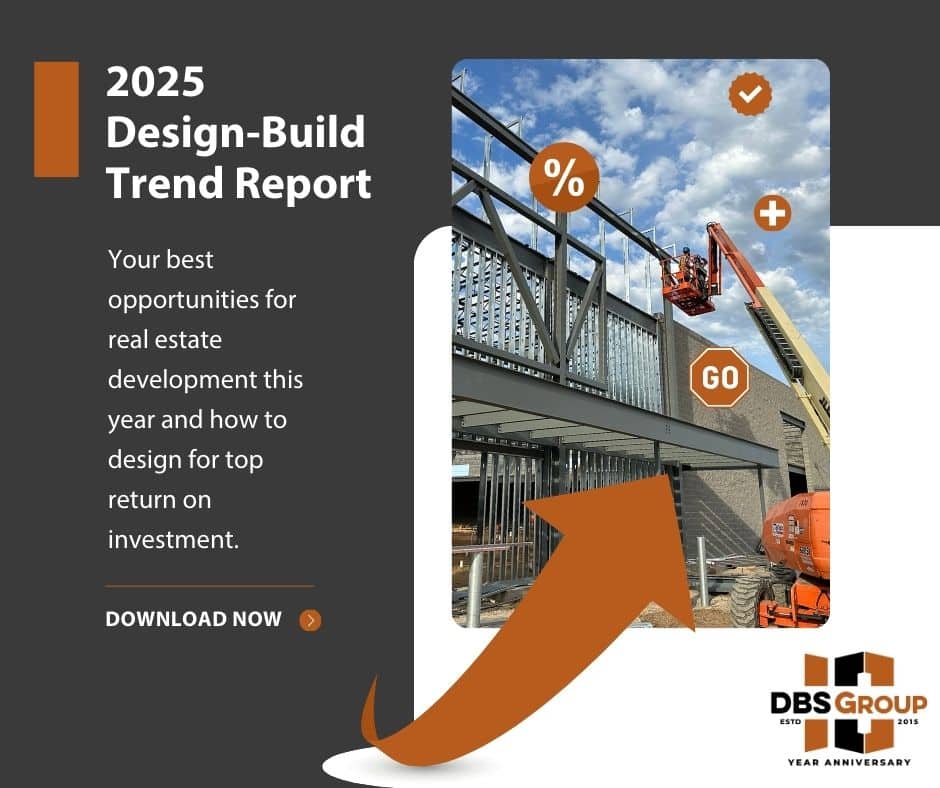
Economic Outlook Gives Real Estate Developers/Owner Optimism
2025 favorable for commercial real estate developers and owners
As we look ahead to 2025, the construction industry finds itself at a turning point. After several challenging years marked by high interest rates and inflation, the outlook is beginning to shift. Lower borrowing costs are setting the stage for growth, even as familiar challenges like labor shortages and supply chain disruptions persist.
As a result, consumer sentiment and confidence are increasing. The Conference Board is projecting 2.3% growth in GDP this year, and Dodge Data predicts construction starts to increase 5%.
While no one, including experts and crystal balls alike, can predict every twist and turn, the economic forecast offers plenty of reasons for optimism — and a few areas to watch closely.
Reasons for optimism
Lower interest rates and improved financing conditions
The Federal Reserve’s recent rate cuts — totaling 100 basis points in 2024, with another 50-basis-point reduction expected in 2025 — are beginning to ease financial pressures across the industry. For developers and property owners, this means lower borrowing costs and a better environment for breaking ground on long-awaited projects. Residential construction, in particular, is set to benefit, with
Yield Pro projecting multifamily starts to rebound later in 2025 for 5.63% growth in 2025 and another 15.4% in 2026.
Resilient consumer spending and economic growth
Despite economic uncertainties, GDP growth is forecasted to remain stable at around 2% in 2025, indicating that the economy is avoiding a recession and maintaining consumer and business activity. Resilient consumer spending supports demand for retail and hospitality projects, with notable increases expected in hotel and retail construction starts.
Growing demand for urban redevelopment and mixed-use spaces
The shift toward converting underused office buildings into multi-functional spaces (e.g., residential, retail, and cultural hubs) presents new opportunities for commercial developers to revitalize urban centers . Mixed-use developments remain a top priority in many cities, responding to tenant preferences for integrated, walkable communities .
Increasing megaprojects
Megaprojects like Mayo Clinic’s “Bold. Forward. Unbound.” initiative are transforming regional markets by driving significant investment in healthcare infrastructure, attracting skilled labor, and spurring related commercial development. These large-scale projects enhance regional economic activity, stimulate demand for supporting industries, and position the area as a hub for innovation and growth in healthcare services.
Technological innovation driving cost-efficiency
Construction technology, such as BIM, digital twins, and robotics, is enhancing project efficiency, reducing costs, and improving timelines. Plus, the adoption of modular construction and prefabrication techniques is expected to grow, contributing to faster and more sustainable project completions.
…and caution
Of course, it’s not all smooth sailing. the development and construction industry will need to address several headwinds, as well.
Labor shortages remain a top concern
Finding skilled workers for specialized roles, such as carpenters, masons, welders and electricians, will be critical as demand ramps up.
Supply chain disruptions
While improving, supply chain disruptions are still a risk. Delays in material and equipment availability can impact project timelines and budgets.
Economic uncertainty
Economic uncertainty persists, with potential geopolitical tensions and policy changes adding layers of complexity.
2025 trend report helps real estate developers and commercial property owners find best opportunities for designing and building in 2025
Learn about all the factors and trends impacting commercial real estate developers and brokers this year — how to design and build to optimize your investment, whatever your market sector. Download your free copy of the 2025 DBS Group Trend Report today.